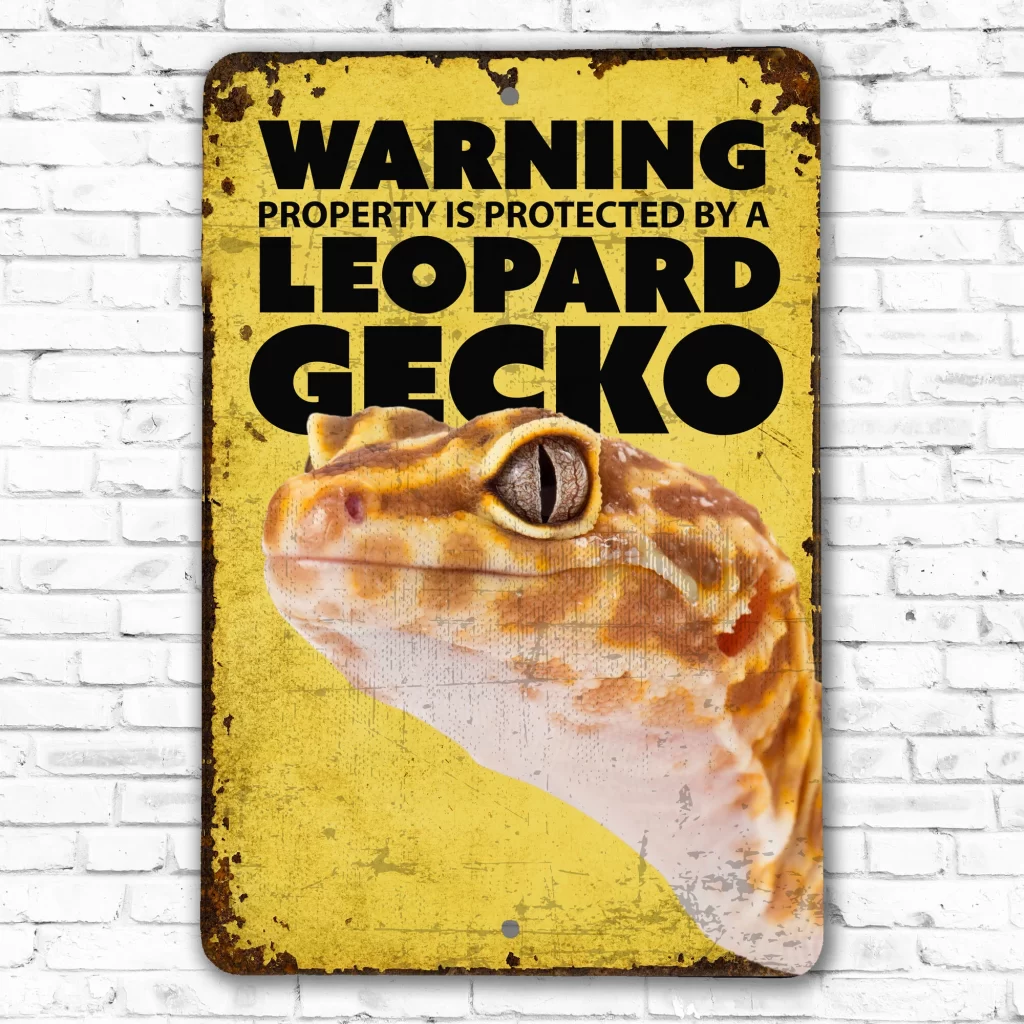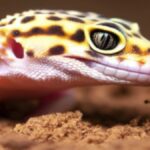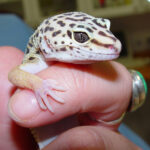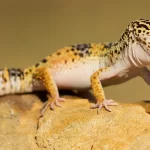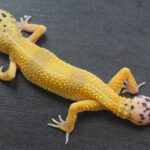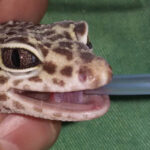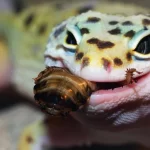Soaking behaviour in Leopard geckos is fairly common, but there are some cases where it is abnormal.
Introduction to Leopard gecko soaking
From time-to-time owners will find a Leopard gecko soaking in the water dish — especially during periods where they shed their skins. For Leopard geckos, soaking in water is a great way to help loosen dry skin which aids in the skin shedding process.
Other than having an increased humidity effect, by soaking in water Leopard geckos attempt to cool themselves down, slow down dehydration and to rid themselves from external parasites.
Also see
Leopard gecko skin shedding — an ‘a pealing’ affair Donate via PayPal
Leopard Geckos 101 is a free, informative website helping to improve the quality of pet Leopard geckos. If you found value in any of its content, please consider making a donation. Also see the other ways to support Leopard geckos 101.
Leopard gecko skin shedding problems
Incomplete or difficult shedding in Leopard geckos will often be evident by spending a lot of time in the water container.
A healthy, well-hydrated Leopard gecko will usually shed its skin in one complete piece(54), or a few large pieces, over a period of one to two hours. In the event of dysecdysis (abnormal skin shedding), Leopard geckos will often resort to methods that help to moisten and subsequently loosen the skin.
Skin shedding problems in Leopard geckos are most commonly seen when the environmental humidity is too low(54). Other reasons include low environmental temperatures, improper nutrition, mite infestations (see below) and insufficient enclosure furniture for rubbing(55).
Also see
Skin shedding problems in Leopard geckos
In enclosures where the environmental humidity is too low, Leopard geckos will often spend more time soaking in water. Although Leopard geckos are adapted to warm desert-like temperatures, they do limit their activity to the cooler parts of the day. Leopard geckos also spend most of their time hiding away in cooler moist areas under rocks and trees and in burrows, tunnels and holes under the soil.
One of the most important things that will create a cool hiding spot and increase the environmental humidity is the supply of a humidifying shelter (hide box containing a moist substrate). Popular hide box substrates include peat/sphagnum moss and vermiculite that is wetted with an equal amount of water. Sprayed paper towel can also be used. The substrate should not be soggy wet, but feel moist by touching it.
Other quick ways to increase the environmental humidity is by increasing the size of the water bowl and by misting the enclosure. Misting (i.e. spraying) can be done twice a day with lukewarm water. The temperature of the spraying water needs to be similar to that of the enclosure (i.e. 25–30 ºC / 77–86 ºF(23), use a thermometer).
Also see
Ensuring the correct humidity for pet Leopard geckos
Leopard gecko hide areas and hide boxes
Mite infestations
Skin mites are small, tiny tick-like parasites that inhabit the outside skin layers. Their presence in Leopard geckos is usually quite obvious. These parasites tend to get stuck and loosen the outer layers of the skin, leading to excessive skin shedding and subsequent soaking behaviour. Mites are removed with sloughed pieces of skin. In fact, one of the functions of skin shedding in reptiles is to help get rid of external parasites(54).
By soaking in water, mites will drown and the skin shedding process will go faster. At-home treatment for mite infestations includes soaking or bathing of Leopard geckos in lukewarm water.
A juvenile Leopard gecko being soaked in a bowl of water. By soaking in water, Leopard geckos naturally try to get rid of mite infestations. Image by adyn02llee
Also see
Mite infestations in Leopard geckos
Overheating and dehydration
Soaking behaviour in Leopard geckos is often an indication that the environmental temperature is too high. Overheating can also have a decreasing effect on the humidity. In these cases, a Leopard gecko is prone to become dehydrated — which can be life-threatening on its own.
Leopard geckos require a temperature range of 25–30 ºC / 77–86 ºF(23) with a drop to about room temperature during the evenings. Anything higher than 32 ºC / 90 ºF is dangerous. The environmental temperature can be measured using a thermometer and the humidity can be measured using a hygrometer.
Soaking in water helps with cooling down. Sometimes the Leopard gecko will be actively seen drinking water while soaking. As of yet, the author was unable to find any authoritative literature supporting the, often reported, fact that lizards (and other non-aquatic reptiles) can absorb water through their skins. There is also no support for, the so-called, ‘cloacal-drinking’.
In addition to soaking behaviour as a result of overheating and dehydration, a Leopard gecko might also try to escape the enclosure and/or breath with its mouth open. In these cases, the first thing to do is to remove all heating equipment from the enclosure and re-evaluate the temperature.
Apart from overheating, dehydration can be caused by many things. Other common reasons for Leopard geckos to dehydrate include malnutrition, Cryptosporidiosis, sand impactions (see below) and of course, not supplying water.
Also see
Glass climbing behaviour in Leopard geckos
Ensuring the correct humidity for pet Leopard geckos
Supplying heat to Leopard geckos
Intestinal impactions and obstructions
Severe dehydration can also be the result of intestinal impactions and obstructions. Impactions and obstructions in Leopard geckos are typically caused by the ingestion of non-absorbable substrates (e.g. sand, stones, moss, etc.).
With intestinal impactions and obstructions, dehydration (with subsequent soaking behaviour) can be the result of not enough moisture being absorbed through the intestines. Although there will more likely be other signs, dehydration can be so severe that an effected Leopard gecko will actively drink water while soaking.
Also see
Intestinal impactions and obstructions in Leopard geckos
Suitable substrates for Leopard geckos
Conclusion
This article pointed out some of the reasons why Leopard geckos might show soaking behaviour. A common reason for this behaviour is too low humidities. During short periods of skin shedding this behaviour is more likely normal. Most other reasons should probably raise concerns.

